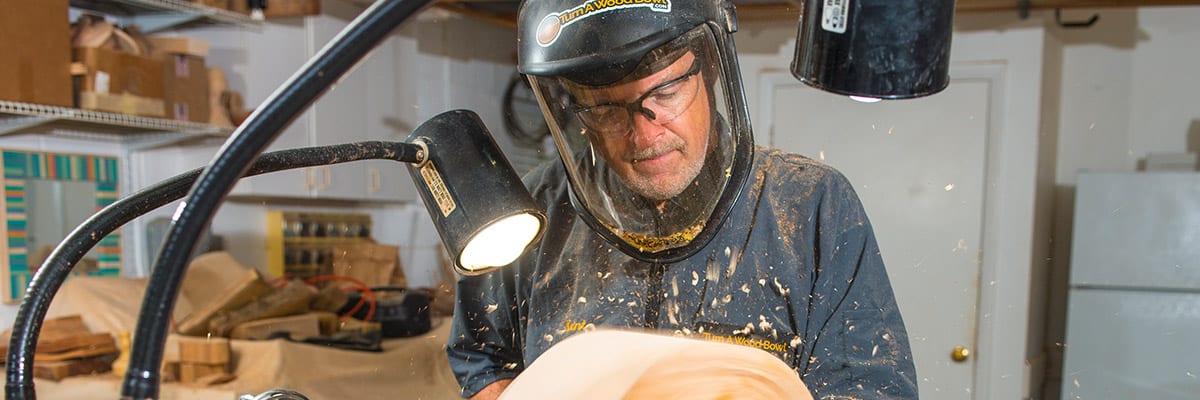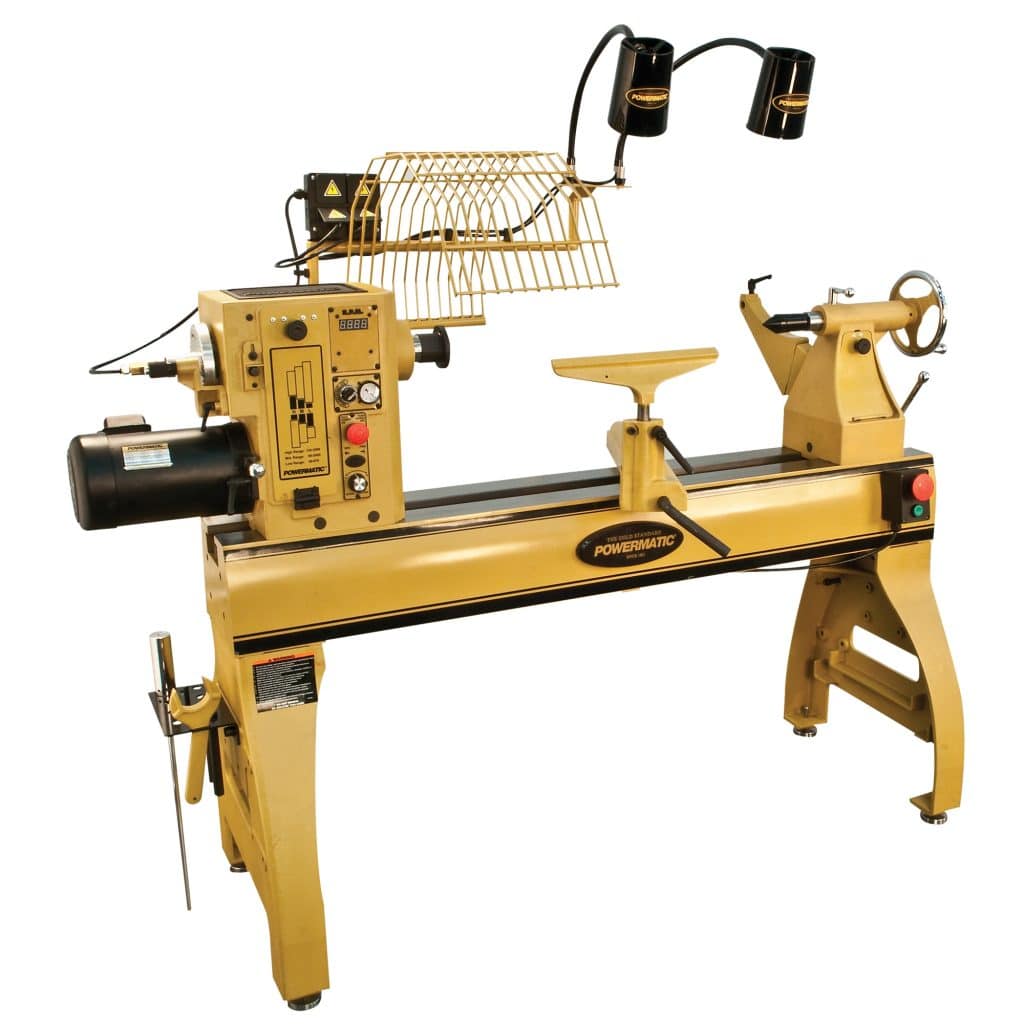Task Lights Vs Flex Arm Lamps for Woodworking

Share:
Whether it’s a task light or a flex arm lamp, woodworking requires great lighting. When you’re using a wood lathe, it’s imperative that you’re able to shine the light exactly where you need — and have it stay there. There are tons of light options that woodworkers use, but which is the best? Each has its fans, but which one really makes a difference when you’re woodworking? We’re here to answer questions about cost, quality, and – our favorite – design. For the purposes of this article, we narrowed the field down to task lights vs flex arm lamps. Here’s the low-down on both options.
Task Light Vs Flex Arm Lamp: Which costs more?
A few months ago we posted an interview with Kent Weakley, whose Turn a Bowl Youtube Channel has over 30,000 subscribers. Kent is an expert in the area of turning found wood into bowls, and it was interesting to hear his thoughts on how woodworkers make their decisions when it comes to their tools.
Woodturners, myself included, can be very frugal people. It’s common to buy inexpensive light stands, with poor arms or weak bases. Sometimes people BUILD a base, but what they come up with is never that great. Most lamps on the market aren’t sized well for lathe work, nor do they have a large enough lamp to truly illuminate the woodturning.
While we’ll get to the second part of that quote in a second, let’s talk about cost. Though there is some variation in both, overall most task lights (also called architect lamps) will be less expensive than flex arm lamps. Often this is because they feature inadequate or light-duty clamping mechanisms. What does that mean for woodworkers? That often manifests in a lamp that does not provide adequate holding strength. Not only is that an inconvenience (your lamp will move) but it can actually become a safety issue. You don’t want anything shaking loose around your wood lathe!

A task light may be less expensive, but if it needs to be constantly replaced or doesn’t get the job done (or – heaven forbid – causes an accident) it might lead to unforeseen costs. While you may save money at first, we recommend going with something you know will work, and continue to work, in the long run.
Task Light Vs Flex Arm Lamp: Which attaches more securely to the table?
This is really a question about mounts and bases. Often task lights have c-clamps attached to VERY free swiveling bases. That can be a big problem when faced with the type of vibrations that are extremely common in a woodworking environment. A vibration (say, coming from your lathe) can cause the bases to pivot, which could, in turn, send the entire lamp careening into your lathe. That’s a recipe for disaster.
Flex arm lights don’t move in the same way as the flex arm doesn’t need to have a swiveling base to be effective. Pairing that with something like a magnetic base is a great way to work with vibration, ensuring that your light will stay in the same place. In general, we’d say that a flex arm light will often attach more securely to any surface – be it a table or something else – than its task light counterpart.
Task Light Vs Flex Arm Lamp: Which provides better light?
While many things can be subjective, the light that it provides cannot. That being said, there is nuance to that question. A task light can be a great option if all you need is directly overhead – or slightly angled – lighting. Unfortunately, many projects for woodworkers need multiple angles of light to be the most effective. Let’s look again at what Kent had to say.
You might have to go in and pick up an existing cut, for example. You must see the tool really well as it comes into contact with the wood. With my Moffatt lights, I can shine a light down the EDGE of the bowl and it creates a shadow line, which makes it easy to locate the point where a cut needs to be picked up. Same with sanding. Side-lighting does the trick – I can immediately see high and low spots. This is so important to the finishing step. Being able to adjust the light and place it exactly where I need it is critically important.
As Kent stated, the crucial difference for a flex arm light is that it’s able to produce reliable side-lighting. That can take difficult parts of the woodturning process – like picking up an existing cut – and make it much easier than if you’re forced to work around shadows that your overhead light is producing. Kent liked that he was able to shine light at particular angles to the wood, showing him exactly where the imperfections and unevenness in his turnings were. That was vital to his results and helped him make better bowls.
While both are better than other options we’ve seen (seriously, you shouldn’t just use the standard overhead fluorescent lights in your shop, that’s just a bad idea), ideally you want light that can go wherever you need it to — that’s really only going to happen with a flex arm lamp.

Task Light Vs Flex Arm Lamp: Which is preferred by woodworkers?
It might be obvious at this point, but most of the woodworkers that we’ve talked to prefer the flex arm lamp. Recently, Powermatic chose a Moffatt Products Flex arm for the attached lights on their 4224B Lathe with Lamp Kit. Powermatic is an industry leader so it was a big deal for us to get to work with such a reputable name in the lathe industry. It proves to us that there is a growing demand for quality flex arm lamps in the woodworking space.
In the end, we believe that a flex arm lamp is the right decision to provide a cost-effective, quality light source that is able to adjust in the way you need — and stay adjusted. Curious about more specs? Check out our online store or give us a call! We’d love to chat.
_____________________
